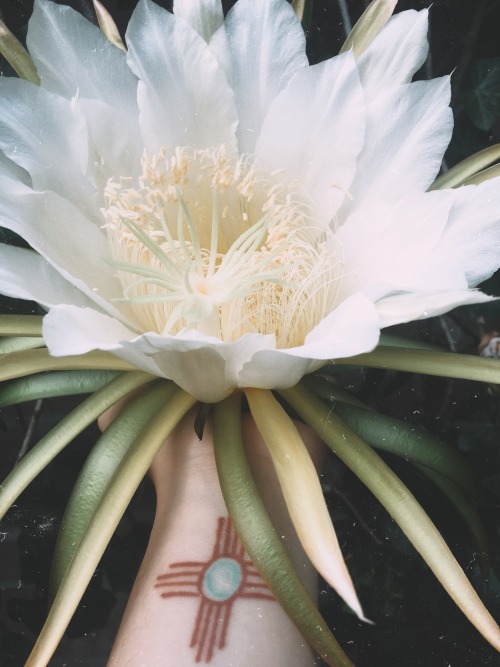Yoga and Chronic Pain
- Laurel Creighton

- Dec 18, 2018
- 6 min read

Yoga and Chronic pain. Read at the end for an exercise I use to combat severe and chronic pain caused by endometriosis.
I know the pain is coming days before it actually begins. It’s the KA before the THWUMP. I begin to move slower and start taking on mass, the body starts to shut itself down before the great fiasco of my monthly severe menstrual cycle. It is a sensation akin to slowly being sucked into a black hole with little way out once the vacuum effect is in motion. The only way out is through whatever tiny little space is left after my body has become too lethargic and bloated to fit.
Then it comes suddenly and all at once. The THWUMP. It begins with a heavy feeling that quickly morphs into a heat from the inside that can only be described as my intestines being savagely gripped and twisted. It’s as if there is that same elementary school bully who wants to show me something “real quick” on my arm before twisting the skin in different directions. My body cannot move because any movement exacerbates pain so severe it can lead to passing out or vomiting. Often I go through the experience without pain medication because the medication itself is too much for my stomach -which has stopped working to give more energy to the crisis below- to handle and more often than not any medication ends right back up where it started.
I’ve had this pain since I started getting periods. My entire affair with becoming a woman has been a traumatic experience. I developed far too early for my mental and emotional development to catch up and I began having intense chronic pain every month since the tender age of grade five. There is also the issue of believability of pain with an invisible illness. Other women don’t seem to experience the same thing I do, and as Leonard Cohen put it I believed that “one of us cannot be wrong”, but since I was the oddity I all too quickly believed myself to be weak compared to my female peers. I was “unable to cut it” in a sacred ritual that has been happening to (biological) womankind since the primordial being.
There is a special experience of being unbelieved about something to innately true to your essence when you are seeking help. I know now, that this is a common experience for others suffering from chronic pain or invisible pain but at the time, it was and still is, truly an issue. Early on I learned that the only help I was going to get was from myself, and that meant trying to find practitioners that would believe me and not settling for ones that didn’t. However, to this day many of the practitioner's therapeutic remedies have either been too expensive, damaging to other parts of my body, or quick temporary fixes with longer lasting hormonal effects such as hard to lose weight gain.
Not to mention the psychological effects of chronic and severe pain can have. Studies show that prolonged exposure to pain can reduce grey brain matter leading to depression and a litany of other emotional/behavioral cocktails. I can attest that having my own body betray me every month by refusing to work has been an emotional roller-coaster of self-hate and fear. Will it come during the wedding? Will I be able to fit into this prom dress? Will I even be able to attend? How will I explain myself?
The deeper practice of yoga has been the spiritual salvation to my intense monthly pain. While I physically am unable to move, there are some gentle posture modifications that do ease the pressure on the abdominal cavity and preparatory asanas to help with the body’s inability to digest effectively pre-menstrual cycle, but the real meat-and-potatoes are the meditative practices, breathing techniques, and philosophy that get me through each and every time.
Copy and pasting from Kripalu: My 200-hour alma mater’s article on Yoga’s Ethical Guide to Living which will briefly explain the Yamas and Niyamas.
The five yamas, self-regulating behaviors involving our interactions with other people and the world at large, include: Ahimsa: nonviolence Satya: truthfulness Asteya: non-stealing Brahmacharya: non-excess (often interpreted as celibacy) Aparigraha: non-possessiveness, non-greed. The five niyamas, personal practices that relate to our inner world, include: Saucha: purity Santosha: contentment Tapas: self-discipline, training your senses Svadhyaya: self-study, inner exploration Ishvara Pranidhana: surrender (to God)
For me, the practice of Yoga and Chronic Pain comes down to:
Ahimsa: doing no more pain to the body than it already is under. Meaning that in times of severe pain, I do my best to offer kind words to myself and my body and thank it for doing its job. Often the process of thanking the parts that are in pain or distress offers some release to the senses.
Aparigraha: Non-attachment which is more difficult than I give credit to, but the process of not being attached to the pain is the cornerstone of my chronic pain practice. I know when it begins that it will continue until it ends, whenever that may be, and not being attached to the samskara or story of victimization and narrative of pain reduces it because then I am only experiencing the pain on a physical level instead of also on an emotional and mental level as well. Obviously, any physical pain can also be a mentally stressful activity but following our base, ahimsa, we want to try to do no more harm.
Svadhyaya: Before in my practice, I felt that I was weak for being unable to live normally like other women that I have met, but now in some strange unknown way I feel as if I am a warrior for every battle that I come out of. It is an exploration of self under severe pressure and stress which when combined with yoga practices make good habits that will transcend the pain and carry off “the sick bed” and into the streets. In my pain, I am able to stand up to who I am or my perceived being and witness the strength that she has to overcome difficult experiences and I’ve watched her progress from unhealthy coping mechanisms to more positive changes.
Ishvara Pranidhana: Surrender. Surrender. Surrender. Making space for all of life, even the unpleasant parts and releasing control. Try it out in this next exercise I use in my day to day yoga practice.
The Pond
This exercise comes from The Labyrinth Reader’s Society. A group of individuals who practice reading prayers for individuals suffering or to ease their transitions into the stage that comes after life. This exercise, in particular, comes from the study group that potential readers must pass through before becoming certified and comes from the Labyrinth Reader’s Course Book.
Purpose: To strengthen your ability to tolerate the states experienced in the Labyrinth. Exercise: Our reflex reactions toward the manifestations of others are the chief cause of the automatic arising of lower-emotional storms within the organic body. Think of the organic body as a calm pool of water, and the shock of impressions from one who is for us a “walking-source-of-irritation” as pebbles. The ripples from dropping a pebble in the water would represent the reverberations that spread through the body. As we would expect, certain pebbles cause greater effect than others. Also, we should be aware that reverberations occur not only on the surface but under the surface as well. This week, we will “open the water” before the pebble so as to offer no resistance to the pebble; thus the ripples do not occur. We could learn to “open the water” before the reflexive reactions of the body are engaged from the impact of the annoying manifestations of others.
I’ve adapted the exercise from its original form “annoying manifestations of others” into a more broad example but the effect is still the same and still has tangible results. I had a boyfriend that would witness me going through these painful ordeals every month for years, and he would lovingly and infuriatingly try to offer me bodywork in times of pain. As a German, there was always some cute and funny communication differences and I remember him telling me to “go lump” when the waves of pain would come which would only make me laugh and skyrocket the pain to the nth degree. The total opposite of what was supposed to happen, but what he was trying to say was “limp” and although I couldn’t do that back then and even now going “limp” is difficult, but it’s the way that the pebble can pass through the water unperturbed.
By going limp, we are not creating more tension in the body but allowing it to pass through us. If you understand that our muscles hold emotions and memories and repetitive patterns, then you’ll understand the importance of relaxing the muscle and skeletal structures during times of increased stress and reaction.



Comments